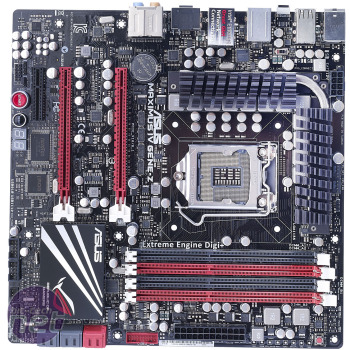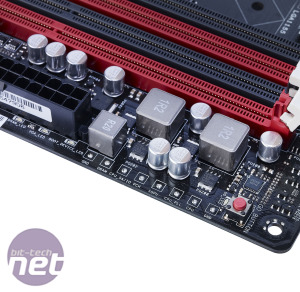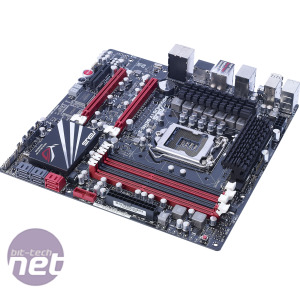
Asus Maximus IV Gene-Z Review
Manufacturer: AsusUK price (as reviewed): £141.22 (inc VAT)
US price (as reviewed): $179.99 (ex tax)
There is something about the idea of performance-orientated micro-ATX motherboards that really excites us. We’re not sure if it’s because they make us daydream, bleary-eyed, about the possibilities of building a tiny, perfectly proportioned PC that can outperform PCs twice its size, or if it’s simply because we like seeing the traditionally budget-orientated micro-ATX form factor getting some love. Either way, it’s easy to appreciate Asus' excellent job of cramming all the enthusiast features associated with its Republic of Gamers (ROG) brand into such a small board.
The Maximus IV Gene-Z follows the traditional Gene development path, as it’s a stripped back, more sensible version of a full-sized ATX board, the Maximus IV Extreme-Z.
Don’t let this fool you into thinking it’s a less competent board, though. We’ve seen before that this process of shrinking the board can actually be beneficial, as it prompts Asus to strip out many of the needless, filler features that can often make ROG boards feel bloated.
This certainly seems to be the case with the Gene-Z, as its feature list is relatively short for a board targeting enthusiasts and gamers. Thankfully, Asus has been smart when considering which features to leave on the board.
Excessively fluffy features such as ROG iDirect (which enables you to overclock the board via your smartphone) have been cut out, while useful technologies such as the Debug LED readout, BIOS Print and the onboard X-Fi sound codec remain.
That’s not to say that all the crazy features have been cut out, though (it wouldn’t be a ROG board if it was completely sensible). Niche items such as the ProbeIt voltage monitoring points and the ROG connect external overclocking features are still present, for example. The board also comes with a healthy count of four USB 3 ports (two on the back panel, and two via an internal header), Asus’ useful MemOK! memory debugger and onboard power, reset and overclocking buttons.
Despite all these features and an M-ATX form factor, the Gene-Z is also well laid out. The important power sockets are located close to the edge of the board, and the RAM slots are sufficiently far away from the CPU socket to allow reasonably large DDR3 modules to fit alongside a large cooler. The only oddity of the layout is the fact that there are only three expansion slots on the board instead of the usual four.
This is because Asus hasn’t fitted an expansion slot between the two 16x PCI-E slots. It makes lots of sense, though, as the expansion slot that should be here would be largely redundant anyway, given that so many graphics cards are now fitted with dual slot coolers. Consequently, it’s a smart way of saving space and traces.
Meanwhile, the chunky heatsinks that cool the 8+4 phase VRM circuitry look good and are pleasingly solid; they don’t move or bend when subjected to the bit-tech wiggle test. The rear I/O panel is also well appointed, with a monstrous tally of 10 USB ports (8 USB 2, 2 USB 3), a PS/2 port, two eSATA ports and a CMOS reset switch all located here.
The final talking point is also located here, and takes the form of an HDMI output. This is included because the board is based on the premium Z68 chipset, which can access the onboard GPU with which LGA1155 processors are equipped. On paper this looks like a good match, but we can’t help thinking that the board would be better based on the P67 chipset, as the Z68 chipset doesn’t offer any major extra features that would interest enthusiasts.
Specifications
- Chipset Intel Z68
- CPU support LGA1155 Core i3, Core i5 and Core i7
- Memory support 4 slots: max 32GB DDR3 (2,200MHz)
- Expansion slots Two 16x PCI-E 2.0 slots (16x or two 8x), one 4x PCI-E
- Sound SupremeFX X-Fi 2 HD Audio Codec with 8-channel support
- Networking Intel Gigabit Ethernet
- Overclocking CPU Clock 80 – 300MHz, CPU Multiplier 34-59; max voltages, CPU 2.155V, PCH 1.7V, RAM 2.2V, CPU PLL 2.2V, VCCSA/IO 1.7
- Ports 4x SATA 3Gbps, 2x SATA 6Gbps, 1x PS/2, 12x USB 2, 4x USB 3, LAN, 4x surround audio out, line in, mic, optical S/PDIF out, 2x eSATA 3Gbps, HDMI
- Dimensions (mm) 244 x 244 (ATX)

MSI MPG Velox 100R Chassis Review
October 14 2021 | 15:04











Want to comment? Please log in.